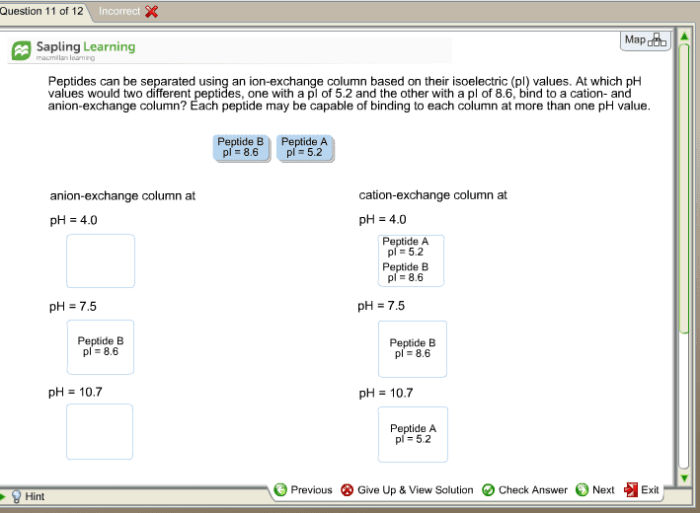Peptides can be separated using an ion exchange column, a powerful technique that has revolutionized the field of peptide analysis. This technique, based on the principles of ion exchange chromatography, allows for the effective separation of peptides based on their charge properties.
In this article, we will delve into the principles, methods, and applications of peptide separation using an ion exchange column, exploring its advantages and limitations.
Ion exchange chromatography is a separation technique that utilizes the reversible interaction between charged molecules and a solid phase with oppositely charged functional groups. In the case of peptide separation, the solid phase is an ion exchange resin, typically composed of a polymeric matrix with immobilized charged groups.
Peptides, which are amphoteric molecules, can interact with the ion exchange resin through electrostatic interactions, forming a dynamic equilibrium between the bound and unbound states.
Introduction

Peptides are short chains of amino acids that play crucial roles in various biological processes, including hormone regulation, cell signaling, and immune response. Ion exchange chromatography is a powerful technique used to separate and analyze peptides based on their charge properties.
Principles of Peptide Separation using Ion Exchange Column, Peptides can be separated using an ion exchange column
Ion exchange resins are composed of charged functional groups that interact with oppositely charged molecules. In peptide separation, the resin is typically packed into a column and equilibrated with a buffer of specific pH and ionic strength. Peptides in the sample are then loaded onto the column and eluted using a gradient of increasing ionic strength or pH, causing peptides to elute at different times based on their charge.
Methods and Procedures
Peptide separation using an ion exchange column involves the following steps:
- Sample preparation: Peptides are extracted from the sample and dissolved in an appropriate buffer.
- Column equilibration: The ion exchange column is equilibrated with a starting buffer that establishes the desired pH and ionic strength.
- Sample loading: The sample is applied to the equilibrated column and allowed to bind to the resin.
- Elution: A gradient of increasing ionic strength or pH is applied to the column, causing peptides to elute in order of increasing charge.
- Fraction collection: Eluted peptides are collected in fractions and analyzed using techniques such as mass spectrometry or HPLC.
Applications of Peptide Separation using Ion Exchange Column
Ion exchange chromatography is widely used in various fields, including:
- Proteomics: Separation and identification of proteins and peptides in complex biological samples.
- Drug discovery: Screening and characterization of drug candidates that interact with specific peptides.
- Biotechnology: Production and purification of peptides for therapeutic or research purposes.
Advantages and Limitations of Ion Exchange Column for Peptide Separation
Advantages:
- High resolution and specificity: Ion exchange chromatography can separate peptides with high precision and selectivity.
- Scalability: The technique can be scaled up for preparative applications to isolate large quantities of peptides.
- Wide applicability: Ion exchange chromatography can be used to separate peptides from various sources, including cells, tissues, and fluids.
Limitations:
- Potential sample loss: Some peptides may be lost during the separation process due to irreversible binding to the resin.
- Sample modification: The high ionic strength or pH conditions used in elution may modify or denature some peptides.
Popular Questions: Peptides Can Be Separated Using An Ion Exchange Column
What is the principle behind peptide separation using an ion exchange column?
Peptide separation using an ion exchange column is based on the principle of ion exchange chromatography, which involves the reversible interaction between charged molecules and a solid phase with oppositely charged functional groups.
What are the advantages of using an ion exchange column for peptide separation?
Ion exchange chromatography offers several advantages for peptide separation, including high resolution and specificity, versatility in separating peptides with different charge properties, and scalability for large-scale applications.
What are the limitations of using an ion exchange column for peptide separation?
Potential limitations of using an ion exchange column for peptide separation include potential sample loss or modification due to non-specific interactions, the need for optimization to achieve optimal separation conditions, and the potential for peptide aggregation or precipitation under certain conditions.

